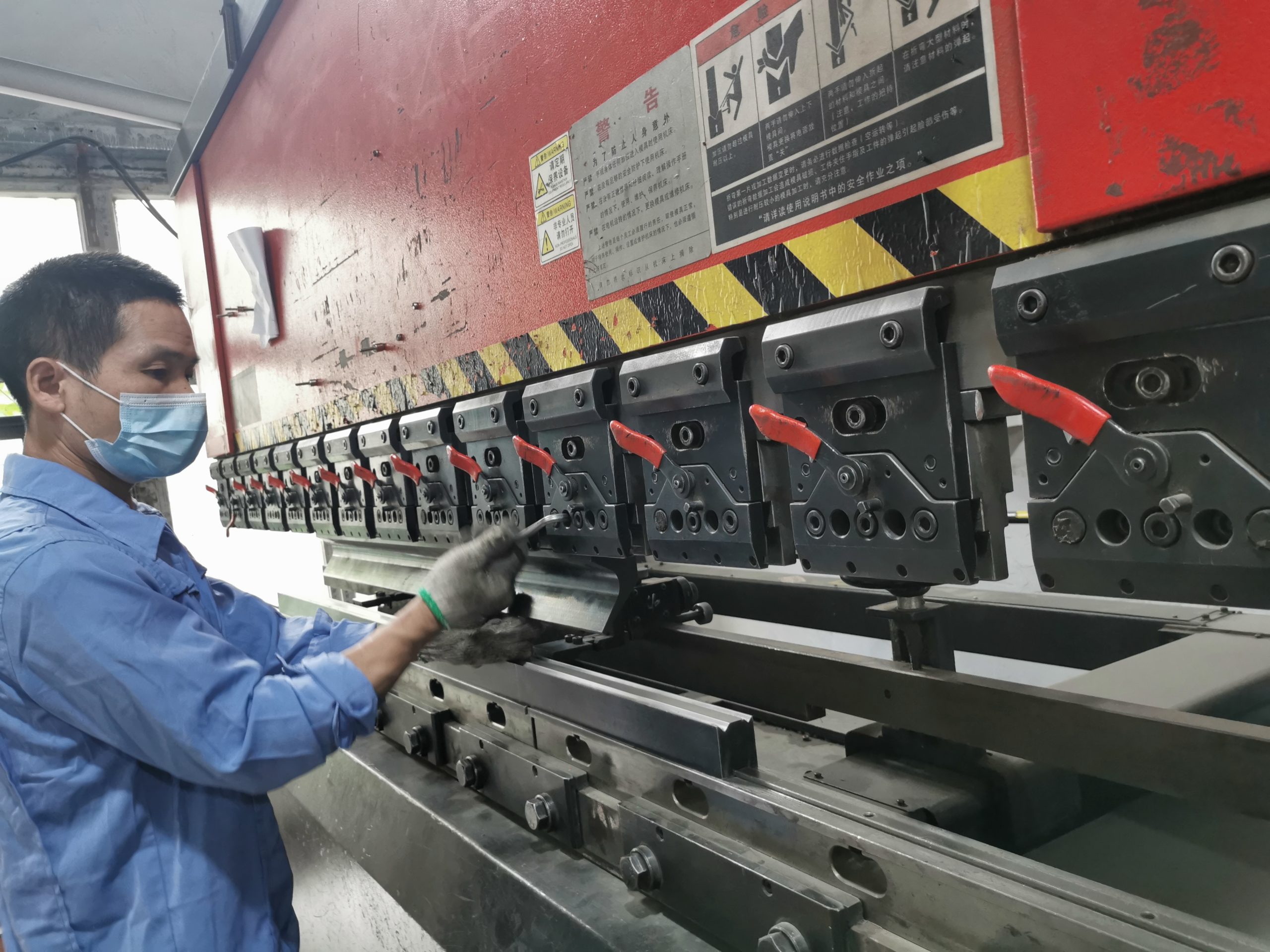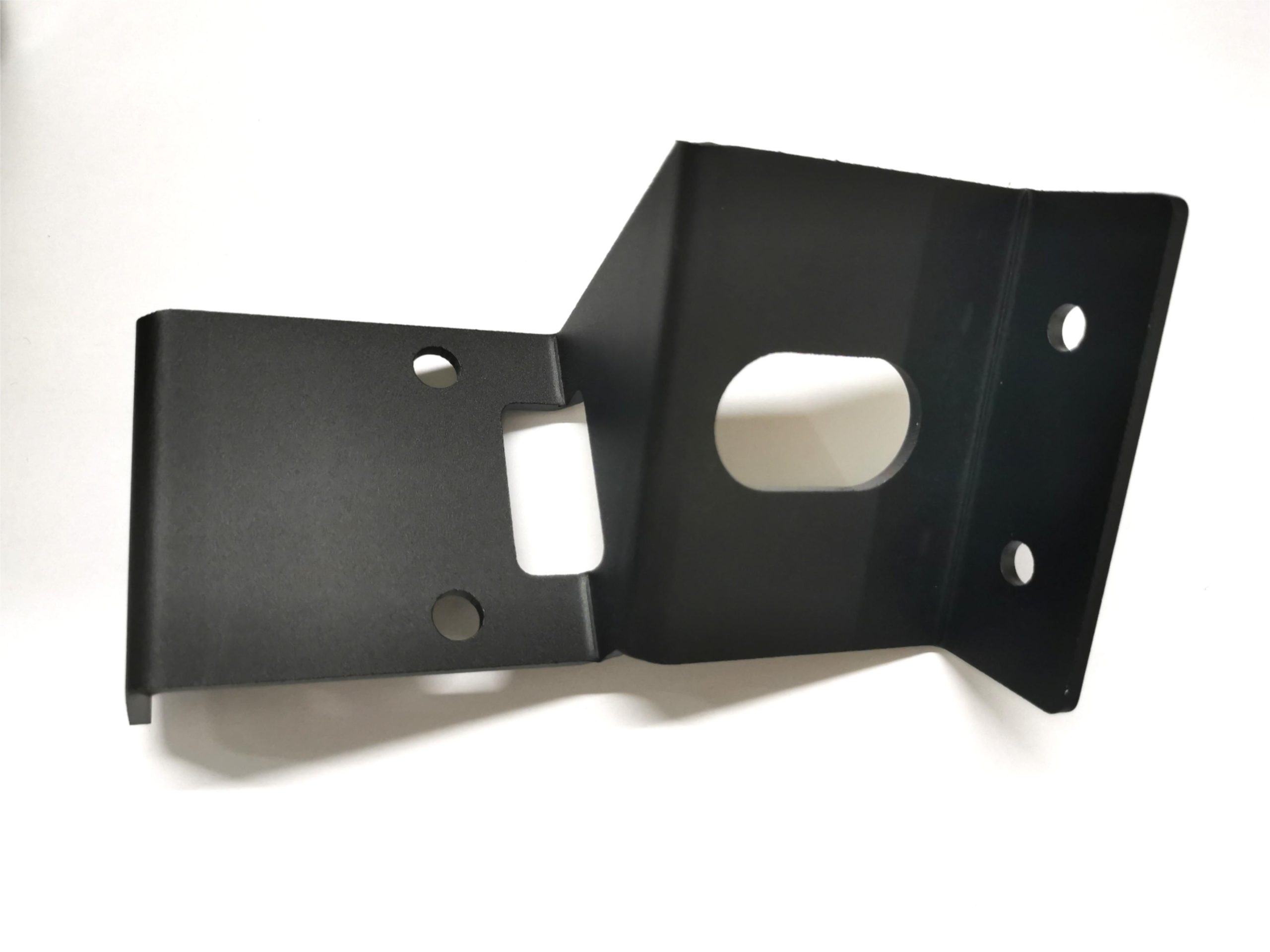Sheet Metal Bending Services
- Custom engineering and manufacturing services from prototypes to on-demand production of high quality, high precison sheet metal parts.
- Wide range of capabilities: CNC bending, laser cutting, welding, press fitting, stamping and more
- Skilled engineers and technicians to provide expert design & DFM support
- In-house manufacturing for cost effectiveness and rapid turnaround
- Millions of precision metal components produced each year
What is sheet metal bending?
Sheet metal bending is a metal fabrication process that bends flat sheet metal into a final shape using a press brake machine. Force is applied between a punch (upper tool) and die (bottom tool), and linear bends can be made for a variety of metal materials and thicknesses.
All brakes are equipped with CNC controllers for precise part positioning and repeatability. Press brake forming works well to create parts that include U-bends, flanges, channels, and internal bends. Lead times for qualifying formed parts are as fast as three days.

Sheet Metal Bending Gallery
Sheet Metal Bending Materials
Diverse metal options for laser cutting across various industries. Suitable for one-off prototypes and tailored end-use components.

Sheet Metal Bending Finishes
Enhance your component’s performance with premium surface finishes that boost roughness, hardness, chemical resistance, and cosmetic appeal.

Sheet Metal Bending Tolerance
| Main Factors | |
| Angle | Any angle is possible |
| Radius | From 1.0 mm to 16.0 mm |
| Material | Some materials (e.g., aluminum 6061) will start to crack at 120 degrees |
| Multi Bends | Bending on any axis, but there is a need to consider the origin location |
| Additional | |
| Angular Tolerance | +/- 0.5 degree |
| XYZ Tolerance Sheet Bending | 0.30 mm |
Sheet Metal Bending Guidelines
We’ve put together top tips in our sheet metal fabrication guide to help you grasp sheet metal fabrication, covering laser cutting, bending, file preparation, and key design factors for efficient manufacturing.

Sheet Metal Laser Bending FAQs
Effective metal bending applies enough force beyond the metal’s yield strength to cause the material to deform without breaking. With different types of metal bending techniques available, you can achieve various shapes and geometries for your desired applications. Some of the key advantages of steel bending or bending metals in general include:
– Speed of manufacture: automation and latest technologies enable us to produce large quantities of components in relatively short time.
– Accuracy: with proper design for manufacturability considerations, bended sheet metal parts can be extremely accurate, especially when the latest CNC bending machines are used.
– Less post processing: unlike welded parts, after bending, products require little to no processing, other than any additional surface finishing or hardware required.
– Reduction in the number of parts: as the components are made from one piece of material instead of multiple parts with joints, this serves to simplify logistics, BOMs and reduce overall complexity.
Sheet metal fabrication is a commonly used manufacturing process in industries such as energy storage, computer electronics, robotics, medical, and aerospace. Common sheet metal parts fabricated with forming include: brackets, busbars, covers, panels, mounts, housings or enclosures.














